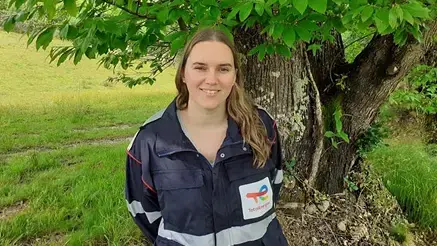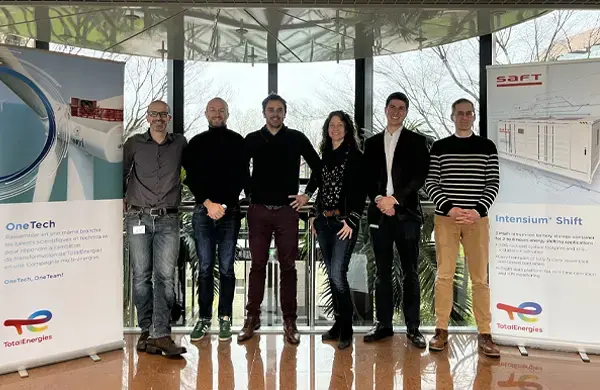From Pau, TotalEnergies engineers design photovoltaic projects across the globe, combining technological innovation, energy performance and biodiversity protection. Interview with Matthieu Vert-Foussats, energy architect at the heart of a proactive transition.
Before the first stone is laid
Before even laying the first stone of a photovoltaic project, anywhere in the world, a full study and development phase must be carried out. The goal is to design photovoltaic installations that are technically viable, adapted to field constraints, and economically sustainable. This phase can last several months, sometimes even years.
At the same time, TotalEnergies conducts thorough environmental and social studies on site. These are managed by in-house experts who listen to nearby communities during public consultations and apply strict standards for biodiversity protection, in line with the Company’s commitments. No project can be built in Natura 2000 areas, and each site undergoes a detailed ecological inventory to avoid impacting protected species. TotalEnergies has also adopted a zero net deforestation policy, which involves offsetting any deforestation linked to a new project with equivalent or greater reforestation.
Call me an Architect

Matthieu Vert-Foussats: For years, I traveled the world, working on major oil and gas production fields with long periods of expatriation. Then, I decided to shift my career toward renewable energies (REs) by studying for an MBA in Renewables. I started working on the first offshore wind projects and had the opportunity to join the Pau team, still in the RE sector, but this time onshore: photovoltaic panels, onshore wind turbines and battery storage.
I’m now an "energy architect," at the crossroads of innovation, biodiversity protection and performance. Like an architect who designs a house based on the land and budget, I design photovoltaic projects taking into account technical, economic and environmental constraints. Specifically, I’m responsible for defining the size of solar installations and launching calls for tender for their construction, in compliance with technical, site-specific and environmental constraints, to achieve the expected yields.
At CSTJF in Pau, I work in collaboration with engineers from all disciplines: specialists in energy production calculations, solar panels and wind turbines, civil engineering, operations and maintenance, electricity and grid connections. My role is to coordinate all these areas of expertise.
Challenges and constraints
MVF: The first challenge is land! It’s a scarce and highly regulated resource in many regions. For each project, we respect minimum distances from homes, airports, military radars, forests, as well as priority agricultural zones or areas of high ecological value. Once these restrictions are applied, we then address the issue of grid connection, which further limits project feasibility.
There are also technical constraints related to the panels themselves. Generally, in the northern hemisphere, photovoltaic panels are all south-facing to better capture sunlight and optimize production. There are also configurations using "trackers" that allow panels to follow the sun’s path. They offer better yield than fixed panels but require wider spacing and more expensive structures. If placed too close together, they can cast shadows in the morning or evening as they move, reducing overall yield.
That’s why we model many configurations for each project: fixed or mobile panels, spaced more or less closely, facing south in the northern hemisphere or north in the southern hemisphere. The goal is always the same: to find the best compromise between energy production, economic profitability and environmental impact.
Global project development from Pau
MVF: We oversee the development of many projects around the world. In Europe, we are present in France, Spain, Poland, Germany, the United Kingdom, Greece, among others. We’ve also implemented solar farms in Africa, the Middle East, the United States, South America, and throughout Asia. All of this is managed between CSTJF in Pau, our headquarters in Paris, our other consultancy offices in France, and our affiliates.
One flagship project is the Ratawi project in Iraq, led by Monica Murillo. It’s a 1.2 GWp solar power plant, representing 2 million solar panels—equivalent to the electricity needs of around 100,000 households in France! It’s the very first renewable project of this scale in Iraq, a country still heavily dependent on fossil fuels. This project is fully aligned with the Company’s multi-energy strategy and is expected to deliver its first green electrons by 2027.
The photovoltaic panel of tomorrow
MVF: Innovation in the photovoltaic sector is extremely dynamic. There are now bifacial panels that capture not only direct sunlight but also light reflected from the ground. This helps optimize overall yield.
At the latest Intersolar global exhibition in Munich, we saw even more efficient panels. While we previously thought the maximum yield was around 25%, some models now aim for 30%. In other words, with the same land area, we can produce more electricity. The sector is evolving rapidly, promising ever more efficient, innovative and cost-effective panels. And we’re lucky to have a whole team of photovoltaic and renewable energy experts here in Pau!

Photovoltaics: How TotalEnergies reinvents its industrial wasteland in the Béarn region
Coordinating technical and environmental studies and dialogue with all the stakeholders: Marie Landaburu coordinates the development of photovoltaics in Béarn.

Manas: a laboratory for biodiversity, large as life and twice as natural!
At Manas (64), a partnership between TotalEnergies and the CEN (French Natural Areas of Conservancy) combines biodiversity and innovation to study and protect local fauna.

Renewable energies: architects of hybrid low-carbon projects in Pau
Solar farms, wind turbines, batteries, combined-cycle power plants, etc. A new type of expertise to combine technologies and orchestrate the life cycle of projects at TotalEnergies.